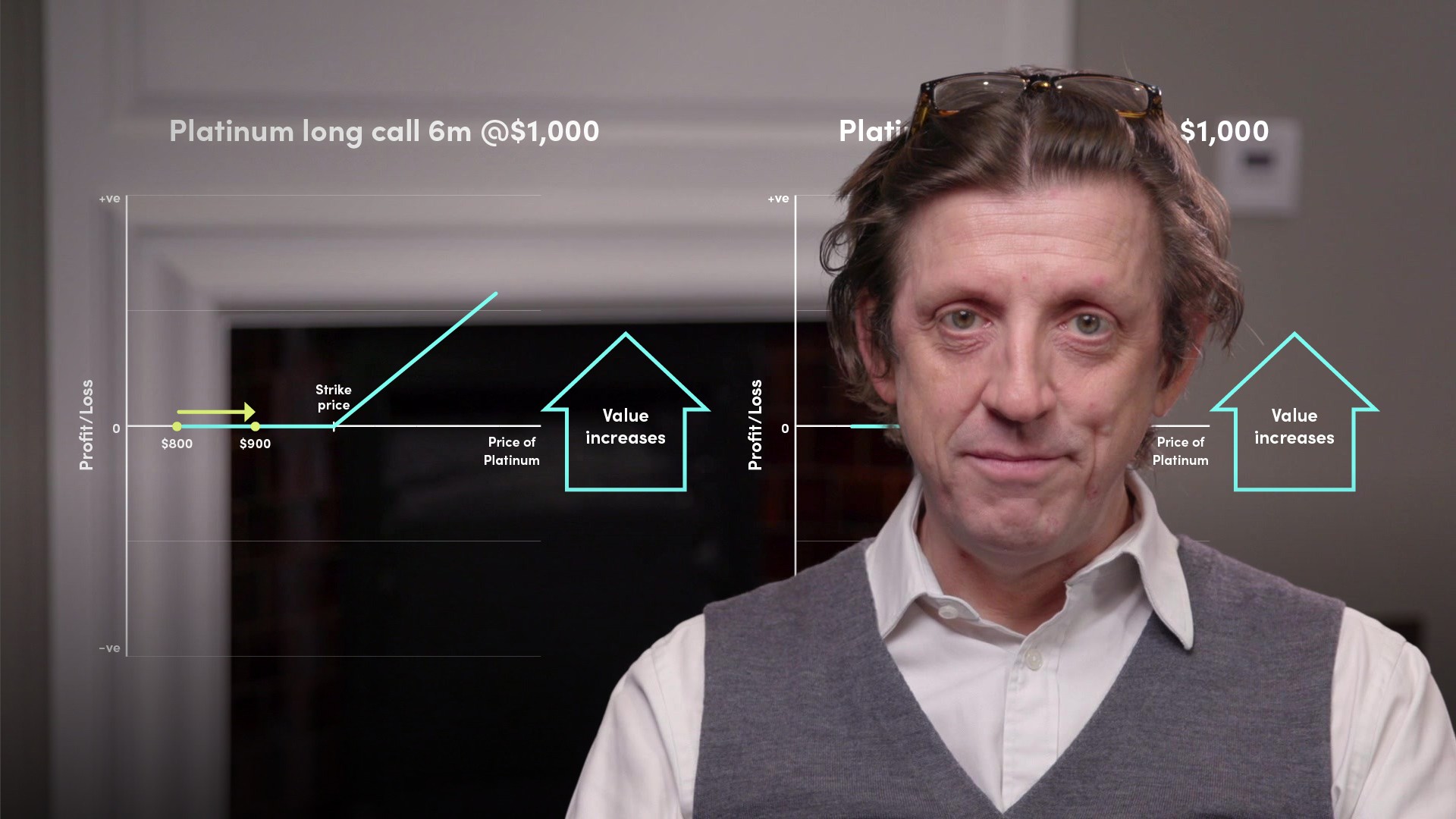
Options Pricing Drivers

Lindsey Matthews
30 years: Risk management & derivatives trading
In the fourth video of his series ‘Derivatives Unlocked’ – Lindsey highlights how Option valuation depends on various inputs, including the price of the underlying, the volatility of the underlying, and others.
In the fourth video of his series ‘Derivatives Unlocked’ – Lindsey highlights how Option valuation depends on various inputs, including the price of the underlying, the volatility of the underlying, and others.
Subscribe to watch
Access this and all of the content on our platform by signing up for a 7-day free trial.

Options Pricing Drivers
8 mins 16 secs
Key learning objectives:
Explain Options drivers.
Define Long Positions in Derivatives
Explain the price movements of options contracts
Overview:
A course in equity valuation would look at fundamental drivers of corporate valuations. In this video we will show how Option valuation depends on various inputs, including the price of the underlying. A long call gives a long position in the underlying. This means that the value of a long call position would increase as the price of the underlying goes up. Value of an option is dependent on a number of factors, including the price and volatility of the option. Call options with lower strikes are worth more and for put options, those with higher strikes will be worth more. Value is more likely to be exercised if it is deep in the money - that is, the underlying price is high.
Subscribe to watch
Access this and all of the content on our platform by signing up for a 7-day free trial.
What are Options Drivers?
One way to get comfortable that you understand the options is to spend time thinking about the variables that could cause the value of an option to shift. While the equity valuation course will look at key drivers of corporate valuations–such as expected revenue, profitability and growth; and the bond valuation course will look at yield curves, spreads, and length as drivers of bond value. Looking at the broken graphs, we've seen before that both the long call and the short call give long positions in the underlying one, and that the long call and the short call give a short position in the underlying one. And by thinking about the asymmetry of option payouts, and then looking at the straddle situation, we saw that a long option position –whether a call or a call (or both together)–gives a position that is a long one. And there are other drivers of the valuation of an option –such as the time of expiry or the dividends on the underlying equity.
What are Long Positions in Derivatives?
Long call gives a long position in the underlying. Value of a long call position would increase as the price of the underlying goes up, if nothing else changes. Call option has now moved in the money, it is much more likely that it will be exercised at expiration, and it is therefore worth more as a result. Although the option is still out of the money but it has got much closer to becoming in the money. The rise in the Platinum price from 800 to 900 dollars is a 100 dollar rise. This is the same amount as the rise from $1000 to $1100 that we saw before. The value of the 1000 strike call goes up – but by considerably more dollars, in the latter case.
When the platinum price rises from 800 to 900 dollars – the 1000 call is an out-of-the-money option. Now a 100 dollar rise in the Platinum price will move the option in the money. The impact will therefore be much greater than it was when the option was out of the money . As the move to 1100 pushes the option to the money, it will have a greater impact in dollars – for example up to 260 dollars per ounce.
What price movements are recorded in a derivative contract?
Value of the call option is driven by the price of underlying Platinum. A 100 dollar rise in the platinum price has led to a close to 100 dollar increase in the value of the 1000 strike call option. Call options with lower strikes are worth more and for put options, those with higher strikes will be worth more. The value of an option is more likely to be exercised if it is 'deep in the money' - that is, the option is very certain that it will be exercised. The strike price of the option also plays a role in how much a change in the underlying price increases the value. The underlying went up $100 and the option value only went up by $60, so the option price is not really affected by the increase in price of platinum, but by how much it went up in the price for the option. If the Platinum price goes up to 5100 dollars an ounce, then the options will now be worth 4100 dollars at expiration.
We see that the 3800 call can be bought for 176 index points. The higher strike puts cost more – as they allow the holder to sell at a higher price.
Subscribe to watch
Access this and all of the content on our platform by signing up for a 7-day free trial.

Lindsey Matthews
There are no available Videos from "Lindsey Matthews"



























